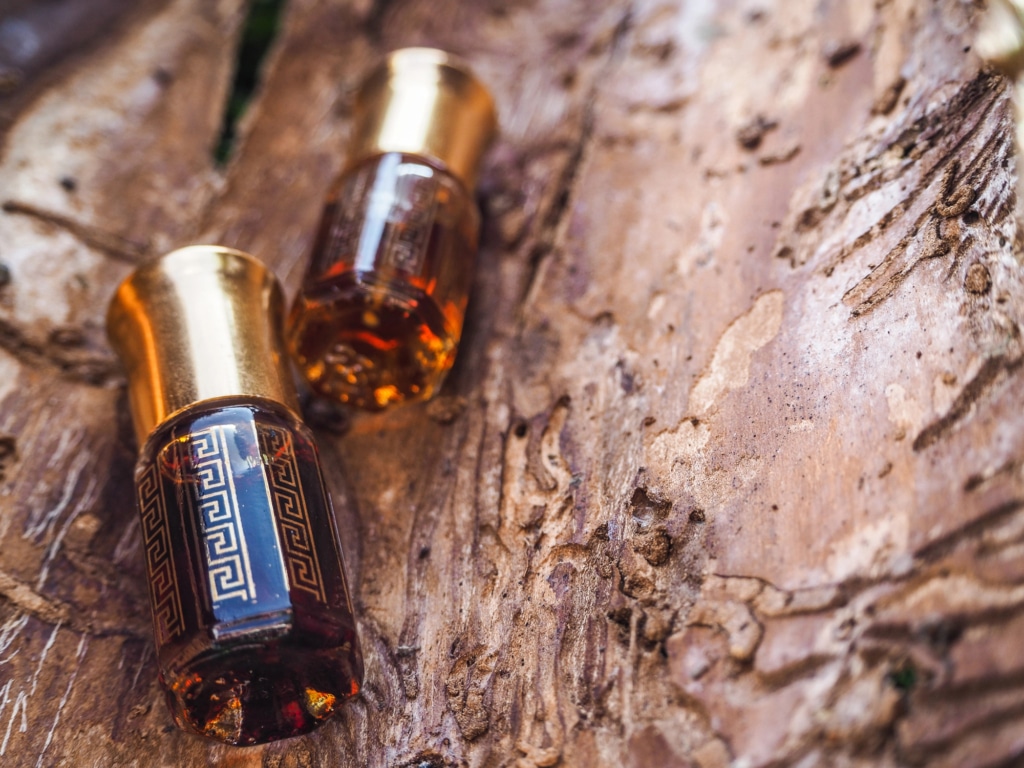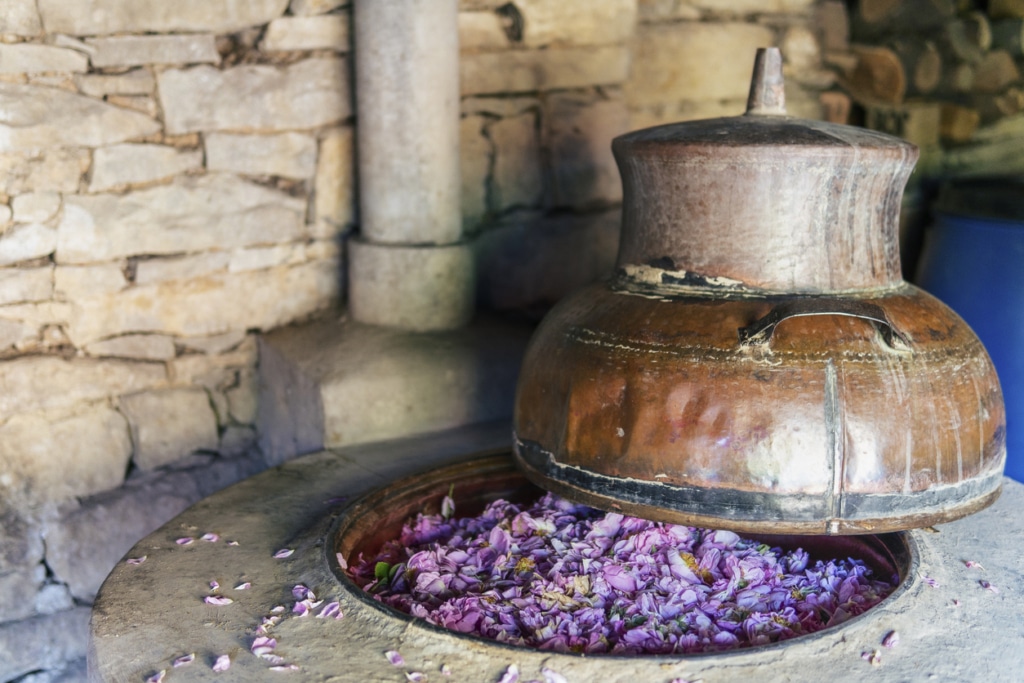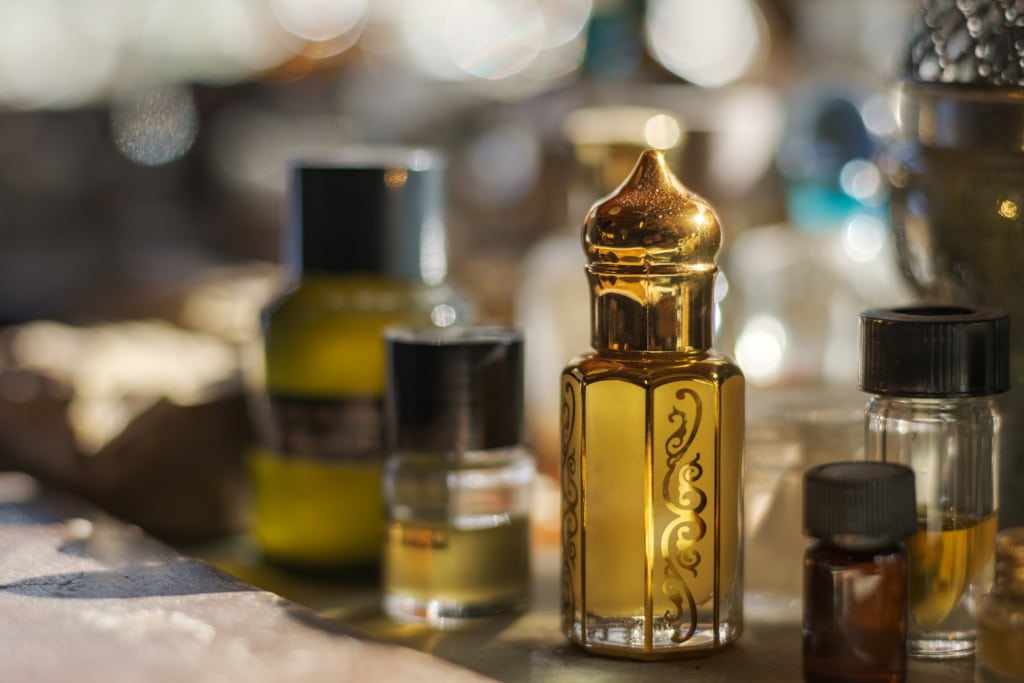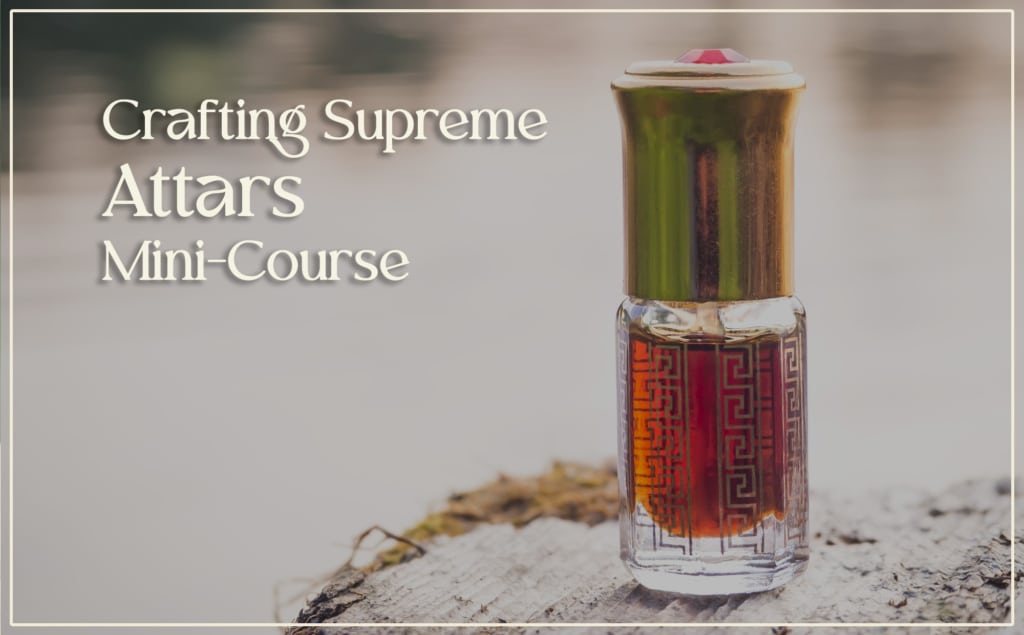
Picture this: You open a small glass perfume vial and touch a drop of oil to your skin. The aroma doesn’t hit you all at once, it builds slowly, like turning the pages of a good book you can’t put down. As the scent settles, it becomes part of you. Hours later, it’s still there, evolving, expanding, never overwhelming, but undeniably present – like a lingering cherished memory.
This is the world of attar oils, ancient natural perfumes that carry not just fragrance, but centuries of spiritual, medicinal, and cultural depth. They’re a world apart from the sharp, synthetic scents of conventional fragrances. Unlike modern perfumes that often fill a room before someone enters it, attars move differently. Their scent trail doesn’t shout, it traces the air like the subtle smoke of incense. They’re not meant to announce their presence; they’re meant to be discovered.
In this article, we’ll explore the origins of attar perfumes, how they’re made, what makes them different, and why so many people are returning to this ancient aromatic tradition. If you’re curious about perfume as a deeper practice rooted in culture, craft, and connection, this is where that path begins.
What Is Attar Perfume?
Attars are among the oldest forms of natural perfume, crafted long before the creation of alcohol-based sprays and synthetic fragrances. Traditionally, an attar is a pure, oil-based perfume made through distillation or infusion of aromatic plants, resins, woods, and flowers. Unlike modern oil perfumes diluted with neutral carriers like jojoba or fractionated coconut oil, true attars are undiluted, either composed entirely of aromatic extracts or infused directly into a fragrant base oil such as Sandalwood or Oud (Agarwood). The result is a 100% natural, concentrated perfume oil, rich with depth, complexity, and longevity.
Due to their high concentration, a little goes a long way. Just a tiny dab on the skin is enough to create a lasting, evolving scent experience. And because they’re used in such small amounts, attars can be made with exceptionally high-quality, rare, and luxurious ingredients – materials that would be prohibitively expensive in larger formulations. Attars are often applied directly to the clothing or skin, usually with a glass dipstick or a small rollerball bottle. The scent warms and unfolds slowly with your body heat and natural skin oils, making it feel more personal, more grounded, like part of you.

History & Tradition of Attar Oil
The roots of attar perfume run deep, stretching across India, Persia, and the Middle East, where aromatic traditions evolved at the crossroads of medicine, ritual, and luxury. While there’s ongoing debate about who created the very first perfumes, many trace their origins back to ancient Egypt, where aromatic oils and unguents were used for both spiritual and cosmetic purposes. These early perfumers infused natural botanicals into oils or wax to create solid perfumes and anointing oils for the body and sacred rites. In those times, incense, medicine, and perfumery often existed under the same roof, inseparable aspects of healing and ritual practice.
The word perfume itself comes from the Latin words per fumum, meaning “through smoke,” a nod to the incense rituals that preceded liquid fragrances. It wasn’t until centuries later that distillation came to be. While Avicenna, the great Persian physician, philosopher, and scientist of the 10th century, is often credited with refining modern steam distillation used to extract essential oils and attars, there is archaeological evidence of distillation equipment dating back over 5,000 years in the Indus Valley (modern-day Pakistan and India). So while Avicenna helped solidify the method, the roots of distillation are likely far older.
In India, the art of making attars began with a traditional copper distillation setup known as the deg and bhapka. These wood-fired stills can run continuously for weeks or even months to produce deeply concentrated aromatic oils. Fresh flowers, herbs, or resins are gently simmered with water in the deg, and the rising fragrant steam travels through a bamboo pipe into the bhapka, a vessel filled with Sandalwood oil. There, the aromatic molecules are absorbed, resulting in a rich, natural attar.
Another time-honored method of attar-making involves compounding, where pure, single-plant essential oils are carefully blended into an aromatic base oil like Sandalwood to create a finished attar. In both methods, the defining characteristic is that the attar remains a 100% undiluted aromatic oil, completely free of alcohol or fillers.
Attar oils soon became symbols of luxury, especially within the royal courts of the Mughal Empire. Nobles anointed themselves daily, and even bed linens and curtains were scented with cooling Vetiver attar to ease the discomfort of hot nights. They were also used as tools of devotion, gifts of hospitality, and even aromatic medicine.
In Islamic culture, attars gained popularity not only for their purity (they contain no alcohol, making them ideal for religious use) but for their deeper spiritual significance. Attar oils were often applied before prayer or used during sacred ceremonies. In Arab cultures, offering guests a touch of attar became a sign of respect and warm welcome, believed to leave a lasting impression of beauty and grace.
Sadly, in more recent times (especially after the colonial era), the traditional use of attars began to decline, and mass production of synthetic “attars” flooded the market. Most of these are far from the true tradition: they're often filled with chemical ingredients that can be harmful to health, including hormone disruptors and carcinogens.
For those seeking the real thing, it’s essential to look for authentic, 100% natural attar oils – or even better, learn to make your own, using time-honored techniques and pure, aromatic materials. Today, the legacy of attars lives on, not just as perfume, but as a living tradition, kept alive by those who recognize scent as a bridge between the physical and the sacred.
Want to learn how to make your own exquisite attars?
Join us for the Crafting Supreme Attars Mini-Course today!
You'll be guided step-by-step by master perfumer JK DeLapp to craft rich, long-lasting attar perfumes using the finest natural ingredients and time-honored compounding techniques.

The Sacred Art of Attar-Making
A well-crafted attar is more than just a pleasant fragrance – it tells a story. As it interacts with your skin and body heat, it blooms in stages, like unfolding petals of a flower. The top notes create the first impression: fresh, bright, and fleeting. Then come the heart notes, which reveal the core character of the blend. Finally, the base notes settle in, grounding the scent with richness and depth that lingers long after application.
Attar perfumes come in a wide variety of aromatic profiles, each with its own character and purpose. Some of the most beloved include Rose, Jasmine, and Sandalwood, fragrances, long associated with beauty, love, and purity. Others are made from more rare or exotic botanicals like Saffron, Neroli, and Oud. Every material has a unique aromatic fingerprint, and selecting the right combination is a deliberate, artful process, crafted to create a sensory experience that resonates with both body and soul.
One of the qualities that sets attars apart from conventional perfumes is how they age and evolve. While most alcohol-based perfumes tend to fade or turn flat over time, attars deepen and become more refined. Their complexity increases as the ingredients continue to harmonize. Over time, many attar oils become even more captivating, transforming into richer, more nuanced expressions of scent.
This slow evolution, along with the purity of the ingredients, is what makes attar-making a sacred art. It’s not just about blending aromatic oils; it’s about working with the essence of plants to craft something that speaks to the senses, the emotions, and the deeper layers of experience. Attars convey a complete story without words, speaking directly to the soul in a timeless language that transcends cultures.
The Modern Revival of Attar Perfumes
In today’s fast-paced, synthetic-driven world, true attars offer an antidote. Herbalists, aromatherapists, and natural perfumers are turning back to attars as a way to reconnect with authentic, deeply rooted aromatic traditions. Attars are a natural oil that honors the whole plant and its energy, making them ideal for personal rituals, aromatherapy, and beyond. Many appreciate attars not only for their complex, evolving scents but also as tools for intentional adornment, wearing fragrance as a mindful practice that supports emotional balance and spiritual connection. This modern revival celebrates attar perfumes as art, ritual, and medicine, inviting us to slow down and engage with scent on a more meaningful level.
The Lasting Art and Ritual of Attars
Attars invite us into a practice of presence and reverence, encouraging us to pause, listen deeply, and connect with the subtle language of scent. They are not simply products to be worn or applied, but botanical companions that bridge the physical and the ethereal. Unlike aromatherapy, which often targets specific functions or effects, attars offer a more expansive experience, blurring the lines between stirring the soul, evoking the intangible, and revealing something beyond words. Attar perfumes revive the ancient roots of aromatic arts as nature intended, honoring tradition, spirit, and the living essence of plants.

Ready to create your own exquisite attars? This immersive 8-lesson mini-course guides you step-by-step to craft rich, long-lasting attar perfumes using the finest natural ingredients and time-honored compounding techniques. Discover the secrets of ancient perfumery and master the art of making supreme attars, all from the comfort of your home.
“Before I even knew what attars were, I discovered that making things in a base of Sandalwood oil helped the fragrance last longer. I kind of stumbled into it, then realized, oh, this is an actual tradition. That moment sparked something in me, and it became a practice that eventually took me all over the world, learning about different fragrances, cultures, materials, talking with distillers, even opening my own distillation operations in Southeast Asia to start sourcing and producing my own ingredients.
It’s been a long journey, but it all started with that discovery – learning how to build fragrances; how to think about top, heart, and base notes differently; and realizing that the goals of aromatherapy and perfumery aren’t always the same. I had to learn a whole new way of formulating. And now, I get to share that with you. Making supreme attars is so much fun.”
- JK DeLapp, course instructor and professional perfumer
Article Written By Melissa Szaro

© 2025 The Northwest School of Aromatic Medicine. All rights reserved.
*The statements above have not been evaluated by the FDA, and are for educational purposes only. This article is not intended to diagnose, treat, cure, or prevent any disease. This article should not be taken as medical advice. Please consult your physician before you use this information for health purposes.
